A word from Coco Lom: Conquering Public Spaces
There are illustrators who enjoy working at a small scale, and then there are illustrators who enjoy working BIG!
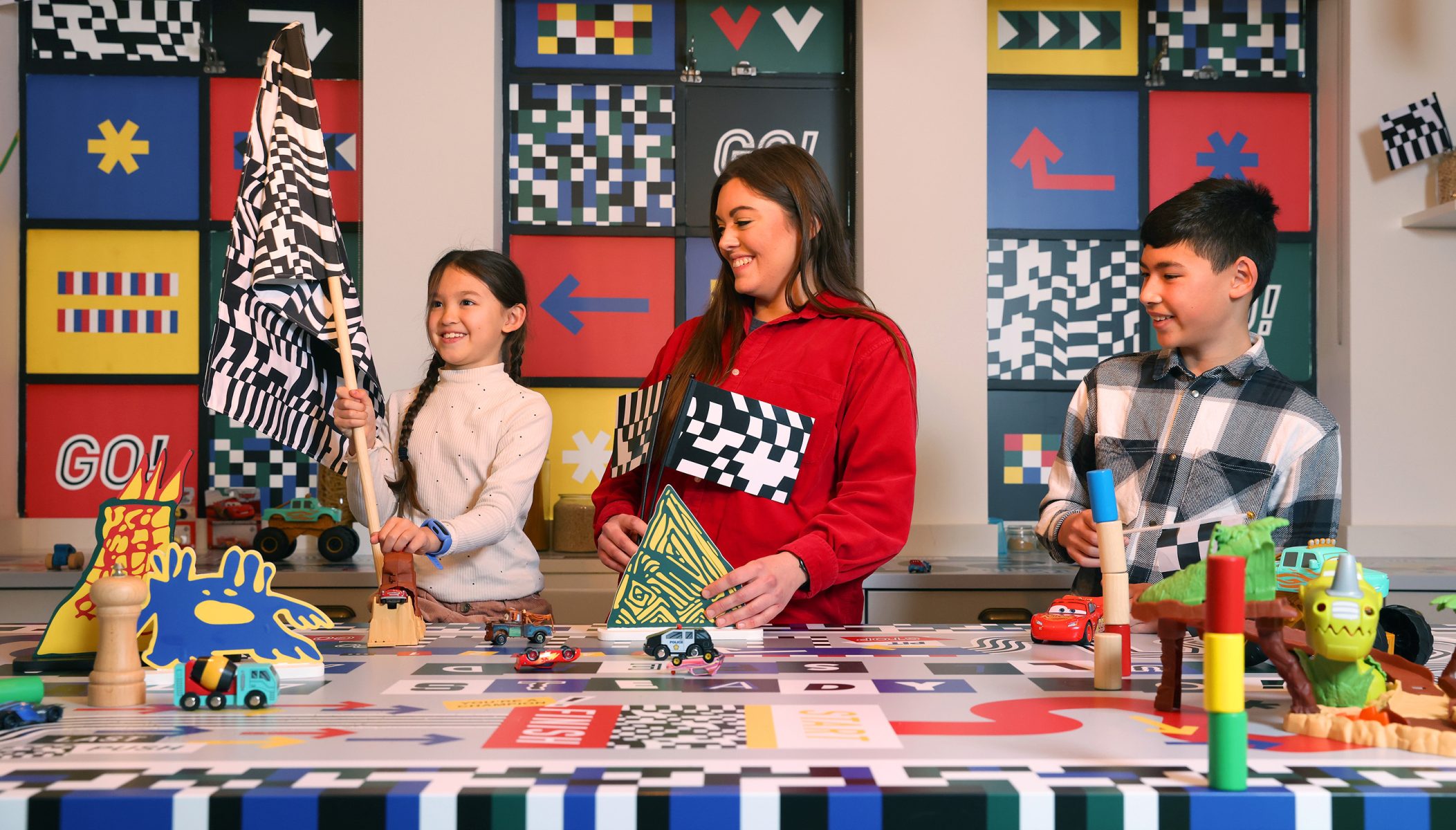
AOI Member Coco Lom is part of the second group. Armed with her camera and photocopier, Coco finds hidden shapes and colours in everyday life and turns them into bold, bright colour palettes and striking patterns. These are then usually translated into large scale mural works around her home city of London.
Her client list includes Covent Garden, Holland & Barrett, The Royal Parks Foundation, Pink Lady Apples and, most recently, The Walt Disney Company, who commissioned her as artist and Creative Director to bring her playful aesthetics to ‘Wonder-ful Playhouse’ pop-up last month.
Interviewed by Marianna Madriz, Coco tells us more about this fantastic project as well as her career trajectory, how she prepares to tackle projects of such big-scale, self promotion tips, and much more.
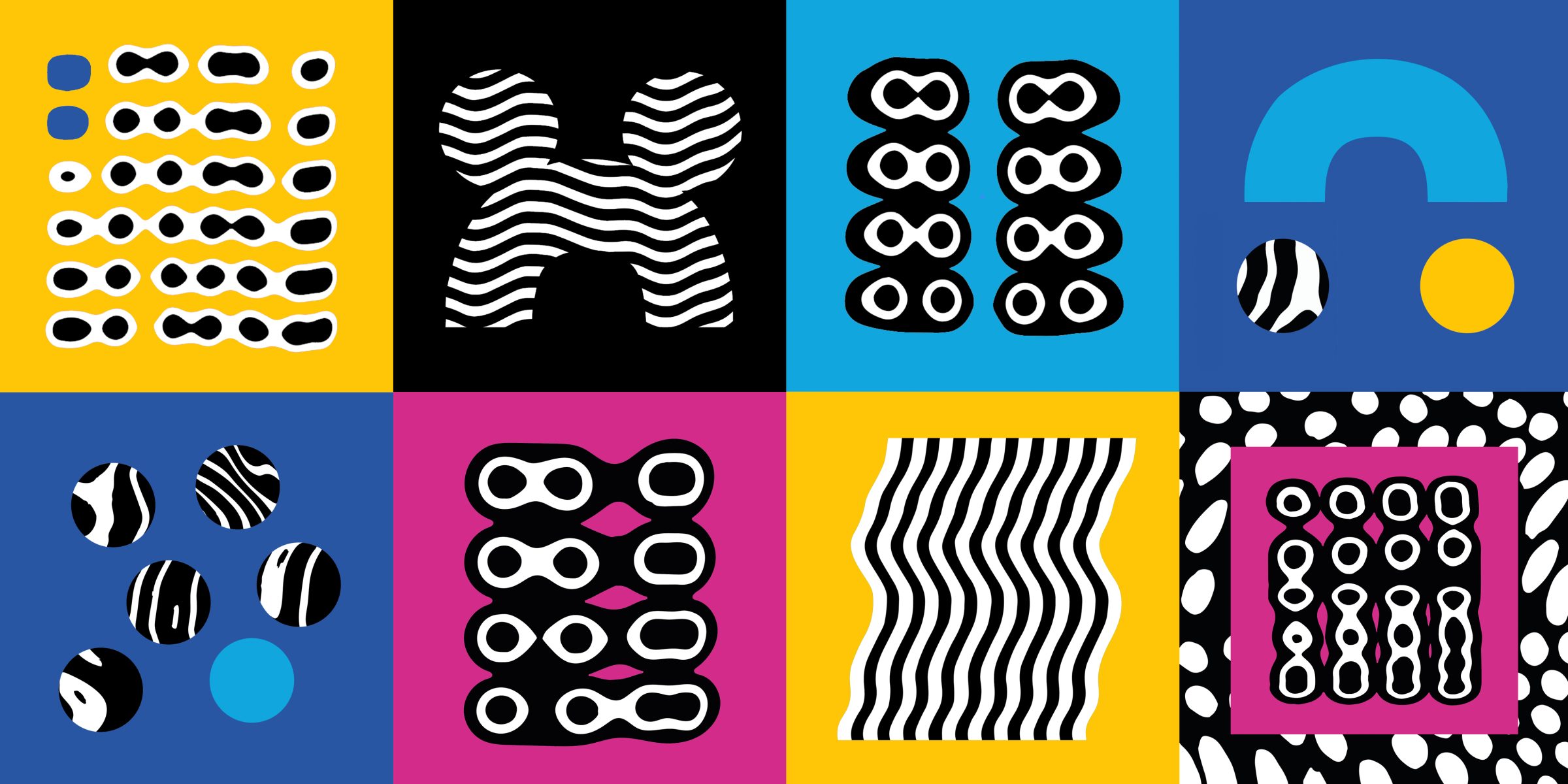
Many of your illustrations can be found in public sites and community spaces. How did you start doing these types of projects?
After I graduated from my Illustration degree at Norwich University of the Arts, I spent some time working as a studio assistant at Shoreditch Studios – a photography studio in east London. In between my shifts there, I was assisting mural artists, helping them paint their projects. I had a lovely relationship with the owner of Shoreditch Studios, who was super supportive of my illustration work and he invited me to paint my own mural on the giant entrance wall of his studio. This was an incredibly exciting first commission! It was a wonderful opportunity for me to show how I could use my patterns and colours to bring joy to public spaces, which I then used as the beginning of my mural painting portfolio.
After that, I contacted other companies with public spaces, showing them my work at the studio and asking if they’d like to commission me to paint something in their space. I went on to create a series of community planters outside a luxury homeware shop in Hackney and walls in a bar in Peckham. I found that opportunities were also coming from assisting other artists, who were often painting in spaces that were looking for artwork in other areas of their building, or who would suggest me to their friends. I quickly learnt that it was all about chatting to people and sharing your enthusiasm!
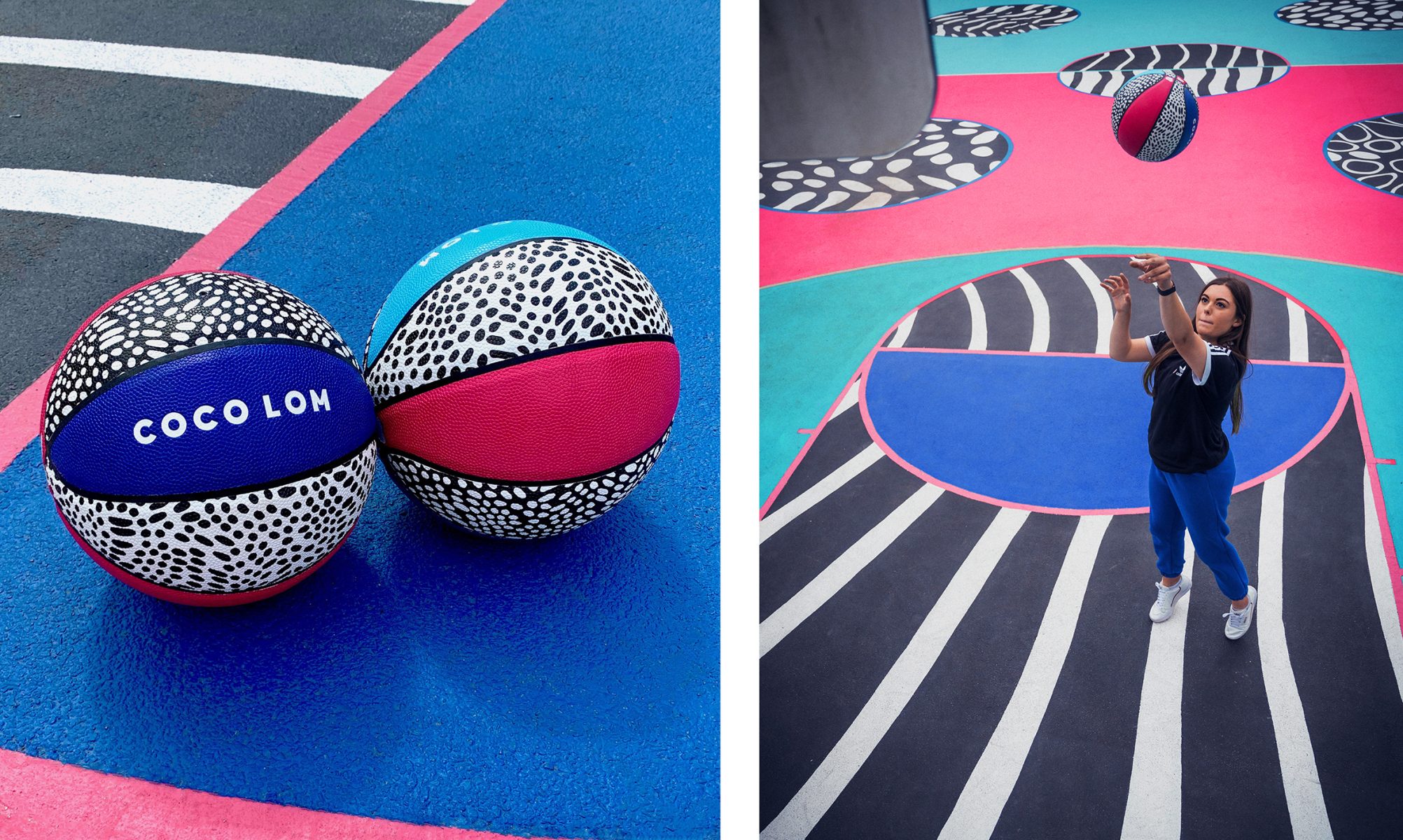
Working on such a big scale must be exciting and challenging. What practical support and/or resources have you needed along the way? What became essential?
Having a hard-working painting team, who pay attention to detail when painting intricate patterns, is a massive support to me on my big projects. Over the years, I’ve made connections and built relationships with paint suppliers who kindly take the time to talk me through options of how to tackle big projects that have tricky spaces or surfaces.
I’m also starting to think about hiring a producer for the bigger commissions. It can be a lot to manage: work out the logistics for supplies and storage, be on site for big deliveries, liaise with locals, do risk assessments and book assistants, on top of preparing and painting the project! So I’m looking into what support I could get on projects like these – talking to other artist friends has been really helpful.
I’ve also gained a professional qualification for building scaffolding towers as that’s vital for safe working for me and my team, and it’s helpful for gaining commissions where the work is at height. Another important thing has been to ensure that I have all the personal and public liability insurance that I need. It’s easy to forget these ‘non-artistic’ but important things!
Being a member of the AOI has also been a huge support over the years as they have a helpdesk where you can speak to someone via phone or email to get 1-to-1 advice on anything, like contract queries or guidance on what you might be charging a client. You can speak to them the same day which has been super helpful on projects that moved quickly.
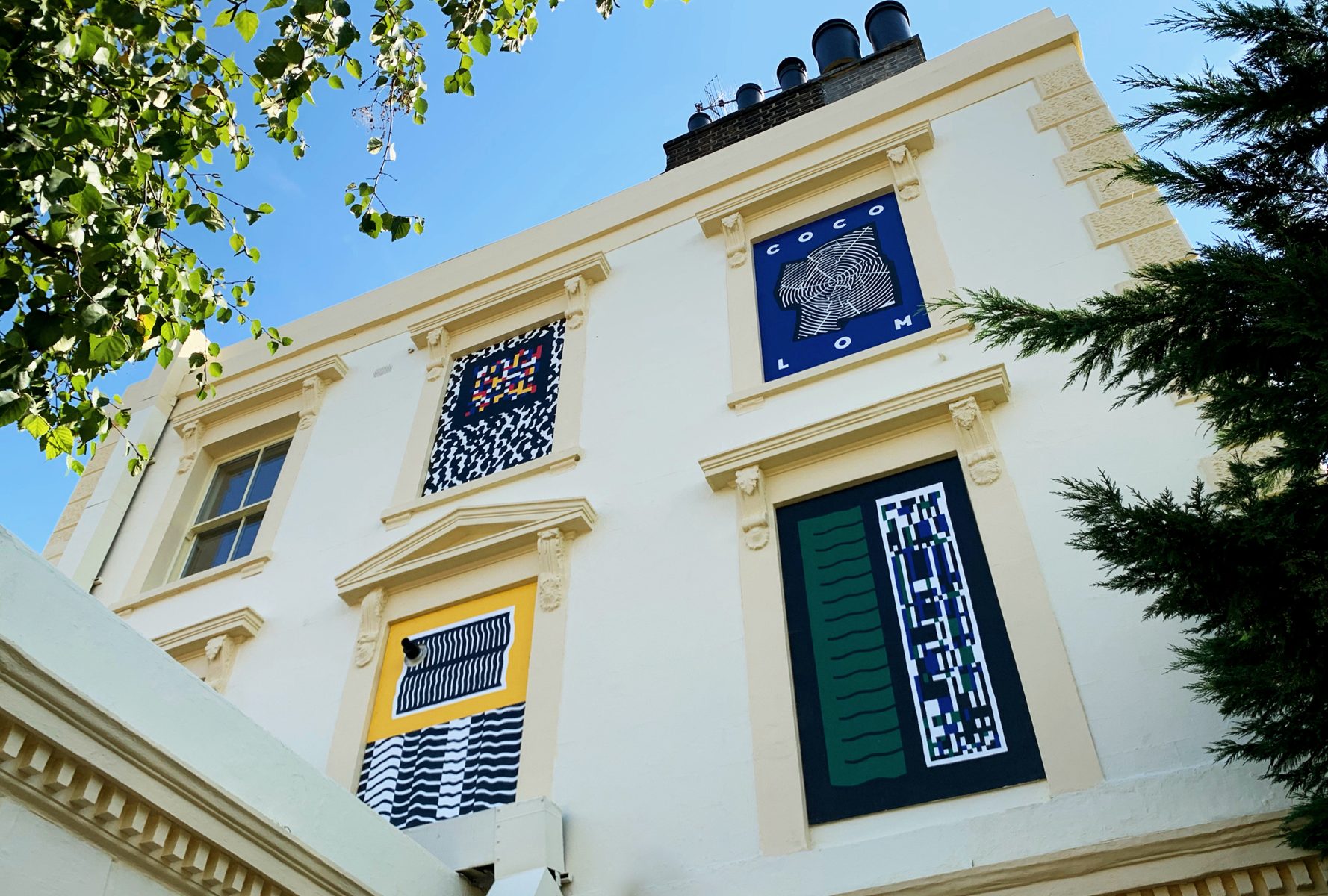
Your new project with Disney is wonderful! Walk us through the process behind your designs, from ideas to final results.
All my patterns and designs for the playhouse were inspired by the colours, shapes and patterns that run through Disney’s big history of stories and characters. I began my process by revisiting film scenes and illustrations of characters, picking out shapes and patterns that stood out to me. For example, in the Disney Princess room of the playhouse, my designs were inspired by Cinderella’s castle – her checkered doors and rectangular turrets. I also remembered the rippling battle flags from Mulan, which had such a vivid impact on me as a kid.
I was also interested in the iconic colours and shapes of Mickey and Minnie Mouse – the curves, circles and dots that make up their world, and particularly the shape of their eyes and the arched outline that frames their face. I used these as inspiration for my designs, which I made with assistance from one of my favourite creative tools – my photocopier! I create my shapes on Illustrator, print them out, and then drag them through the scanner in different ways as it moves. I’ll do a scan, then look at the outcome, and will repeat this sometimes up to 30 times depending on the shape. I’ll do this until I start to understand how I need to move my hand to achieve certain patterns and lines. This is always one of my favourite parts of my process – I think of it like putting together a piece of choreography, but for my hand rather than my body! I worked with the production company Bearded Kitten to then build my designs into the immersive experience in the playhouse.
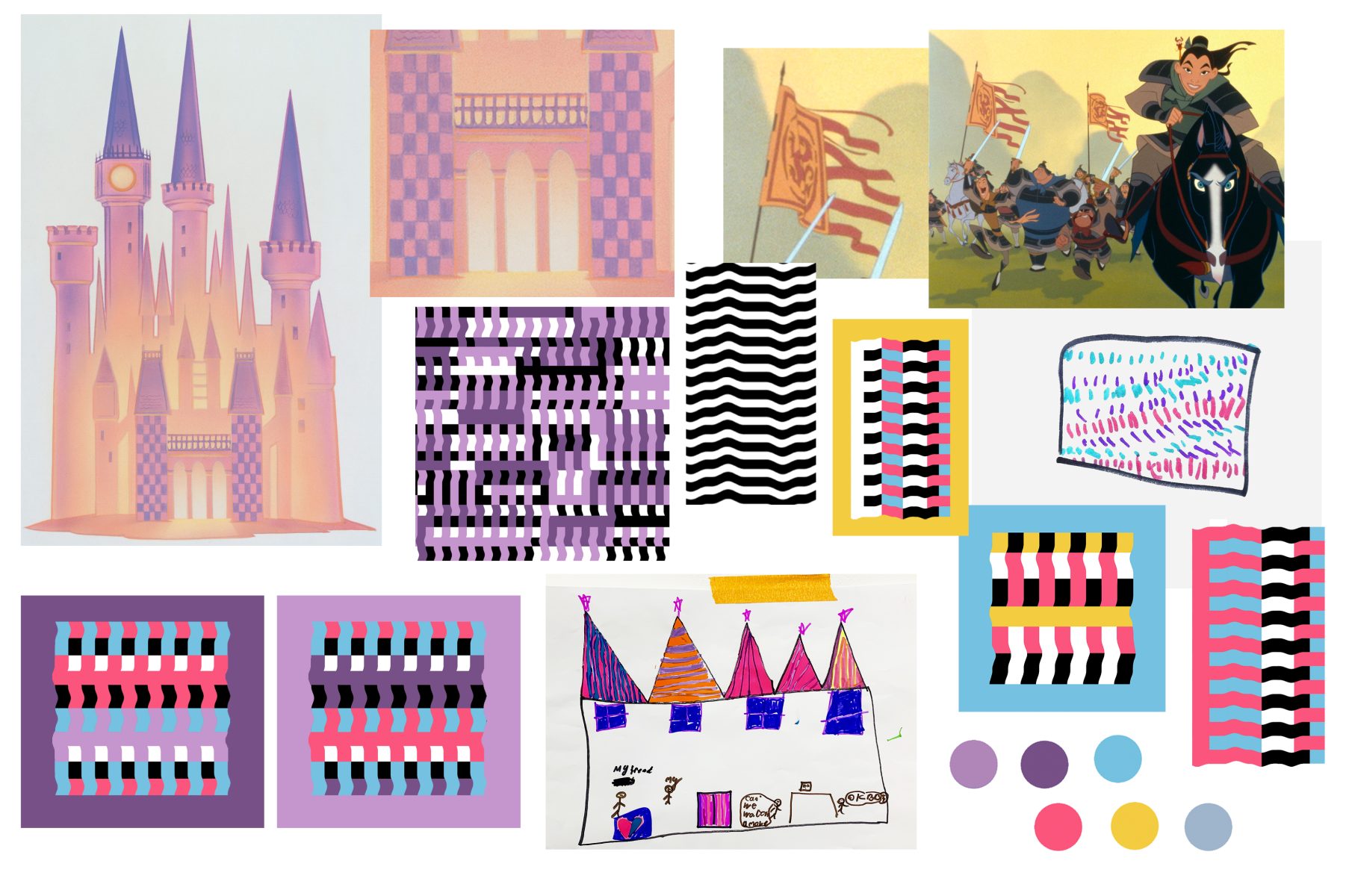
What were your favourite moments from this project, and the biggest takeaway from it?
One of the most exciting parts for me was seeing the children’s faces light up as they entered each room. It was such a wonderful feeling to play together with families while discussing their favourite activities at home. We shared new ideas for creative play which were inspired by the spaces they loved best in the playhouse.
This project has been a fantastic opportunity for me to share my designs across a number of different surfaces, in a variety of ways – including light projections on ceilings in the Star Wars room, and on textiles as pillows and drapes in the Princess room. It’s opened up lots of new possibilities for my practice as to how my colours and patterns can be applied in different spaces.
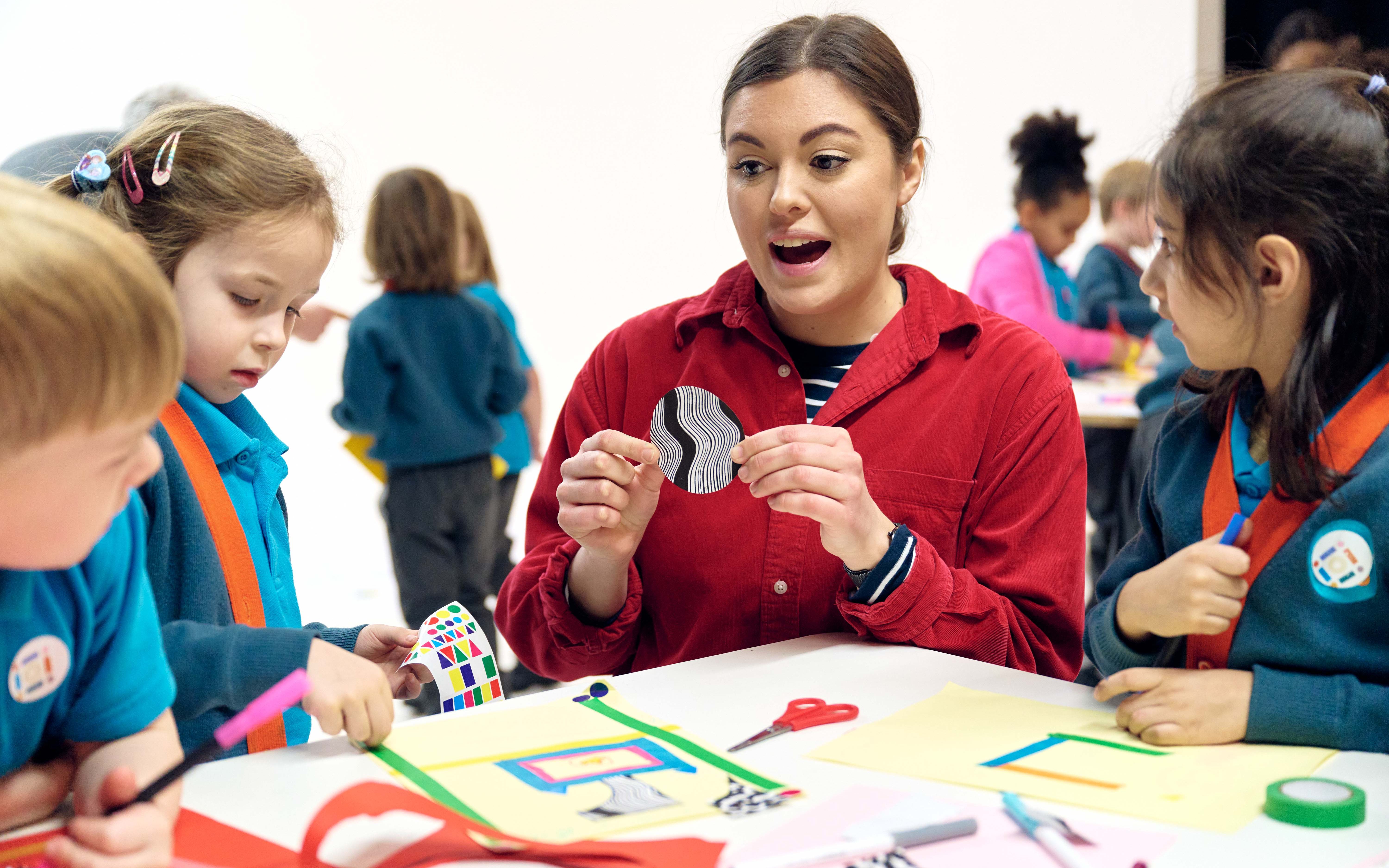
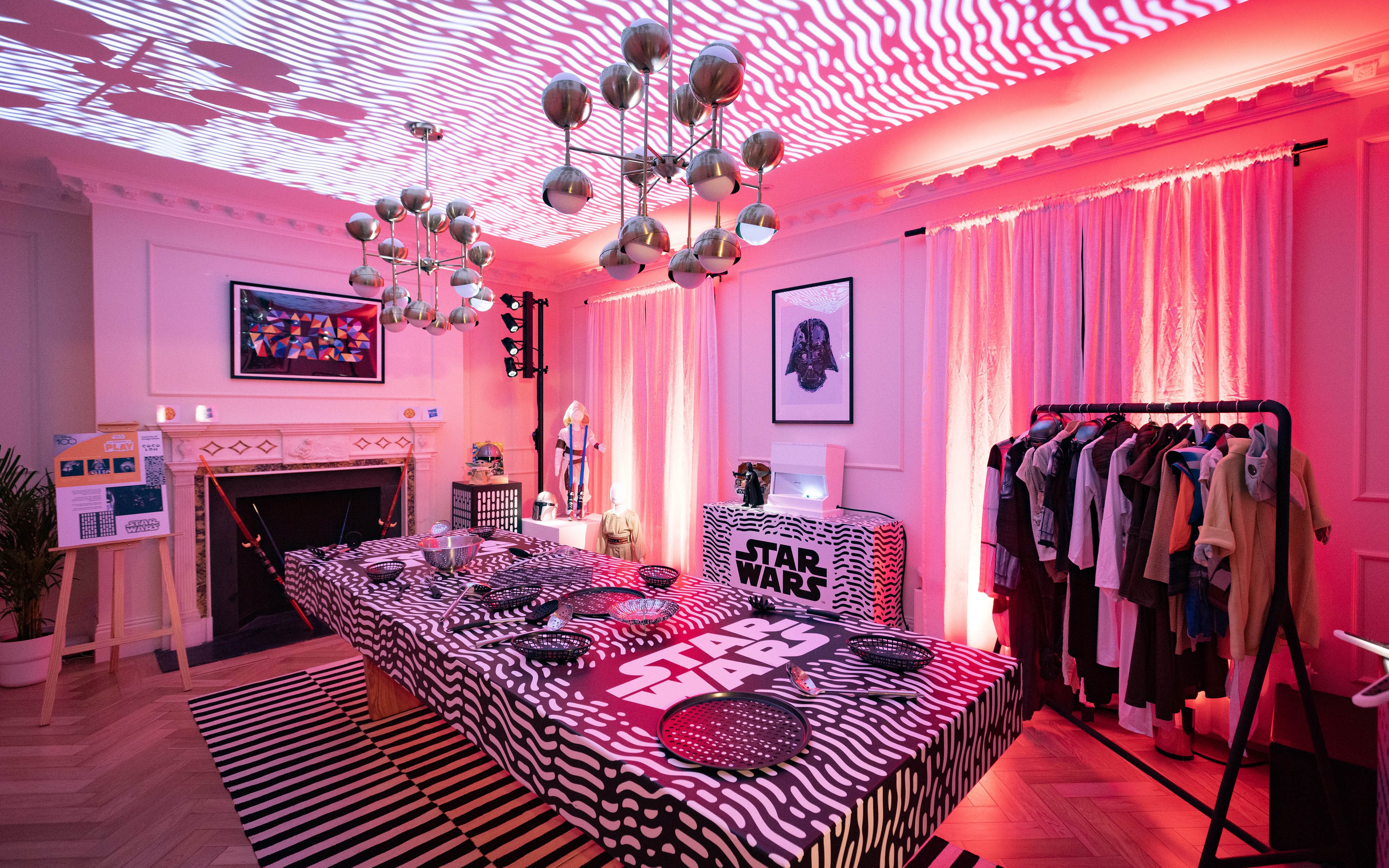
How do you organise your time and achieve a healthy work/life balance?
As a freelancer, my work / life balance really varies and depends on the jobs I have on at the time. Sometimes I’ll have weeks of calmly working by myself in my rooftop warehouse studio, and other times I’ll be working 14 hour days with a team on a building site to meet an install deadline. For me, this mix works really well as I love the excitement, focus and team spirit when bringing a project to life, and then I enjoy taking time in my own space afterwards to re-charge and gather my ideas and inspiration for the next project.
What tips would you give to other illustrators who dream of working BIG?
One of my tutors at uni once said: ‘An okay designer, who works hard to get themselves noticed, will succeed and thrive more than an amazing designer who doesn’t put as much effort into presenting themselves to the world’, and that really stuck in my head! Work hard on sharing your work with people and do it in a well presented way. I’ll often send emails to past clients, as well as clients I’d like to work with in the future, letting them know about my latest project to keep me at the front of their minds for their next opportunities.
I’m also learning that a great thing to do is get in touch with PR agencies and share your work with them and the sorts of projects you’re interested to work on. They and their clients will often be looking for creatives to commission and collaborate with on new campaigns, so it’s a great way to get your work seen by bigger names and brands that might not be as easy to reach out to directly.
Finally, as suggested previously, make friends with a wide network of trusted partners to share ideas, help solve technical problems and give help at 24 hours’ notice when unfriendly weather has caused near impossible deadlines!
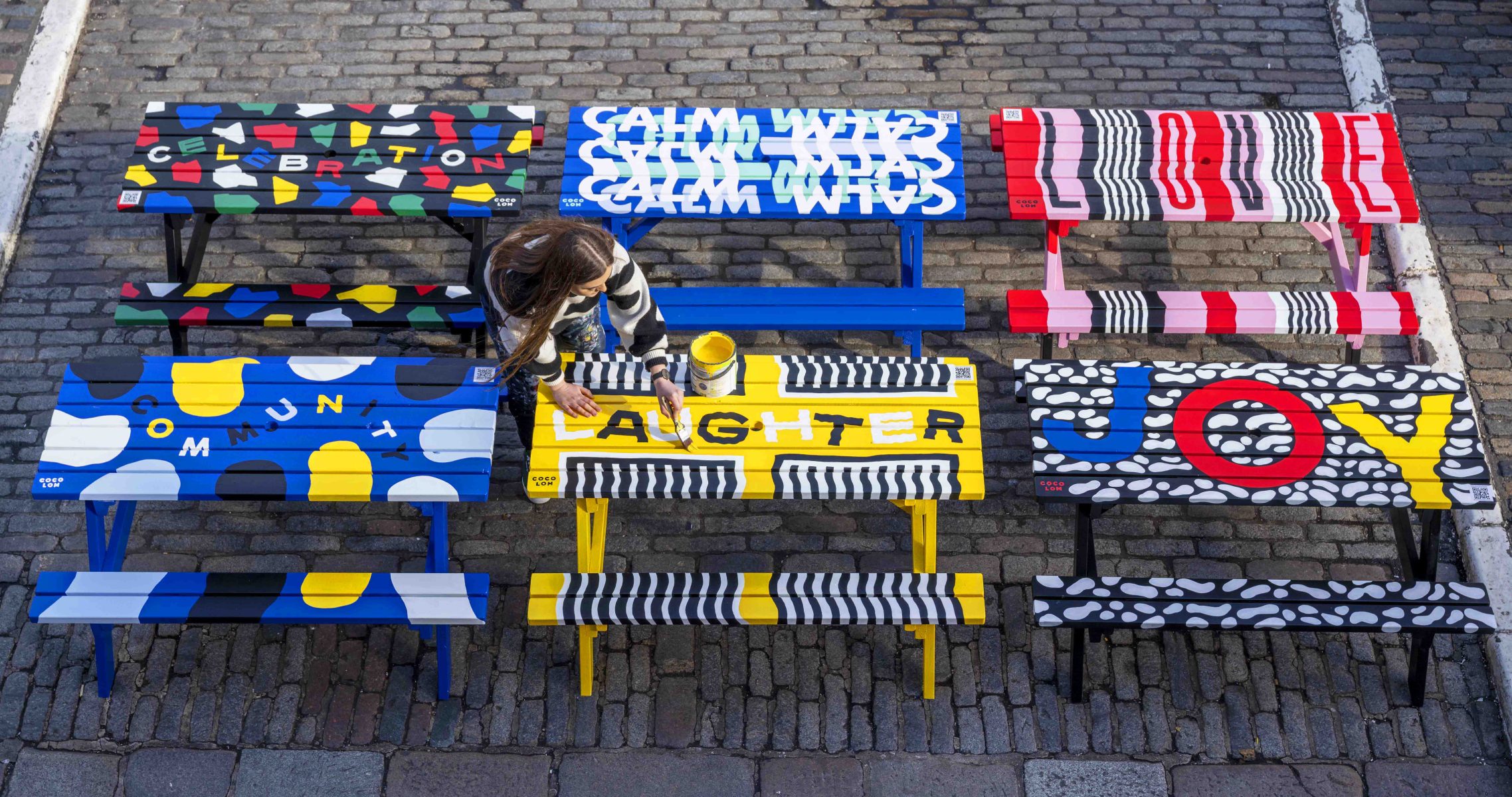
Many thanks to Coco for taking part in our interview!
Make sure to catch more of her work on her website and Instagram.
Back to News Page
